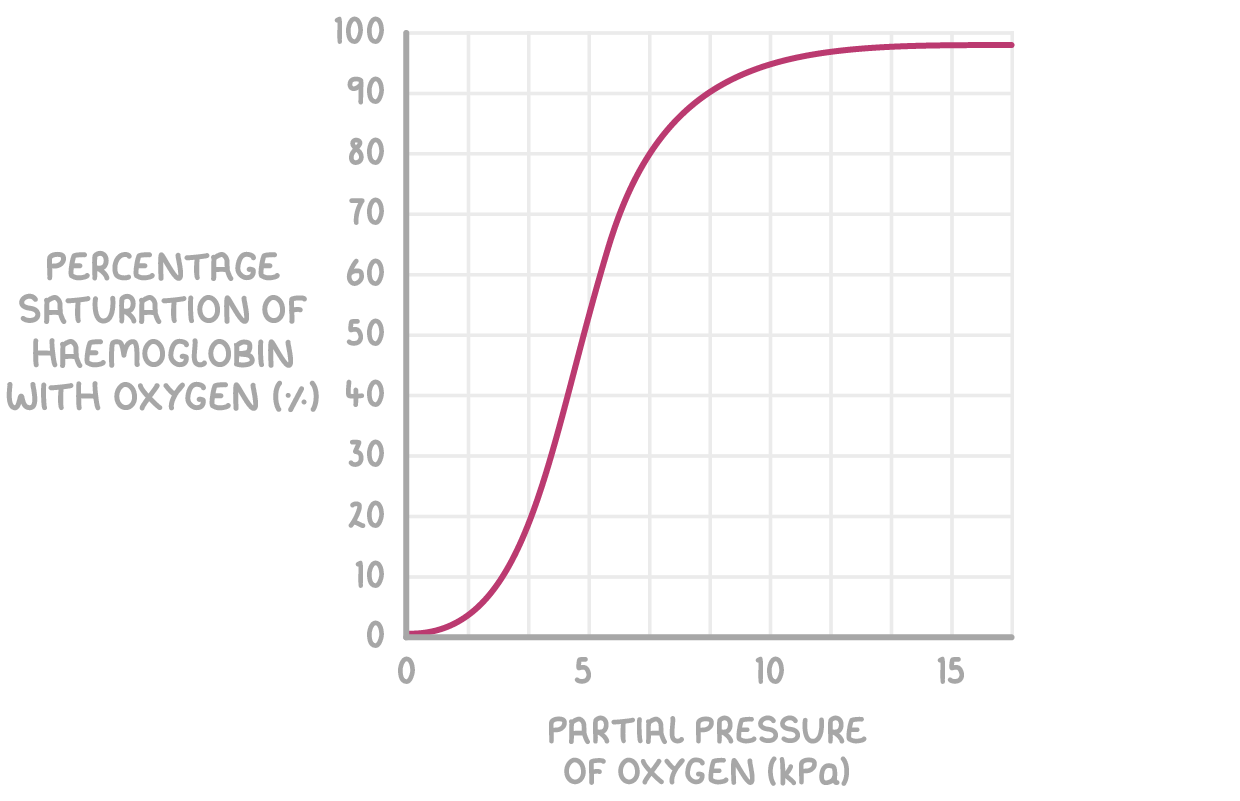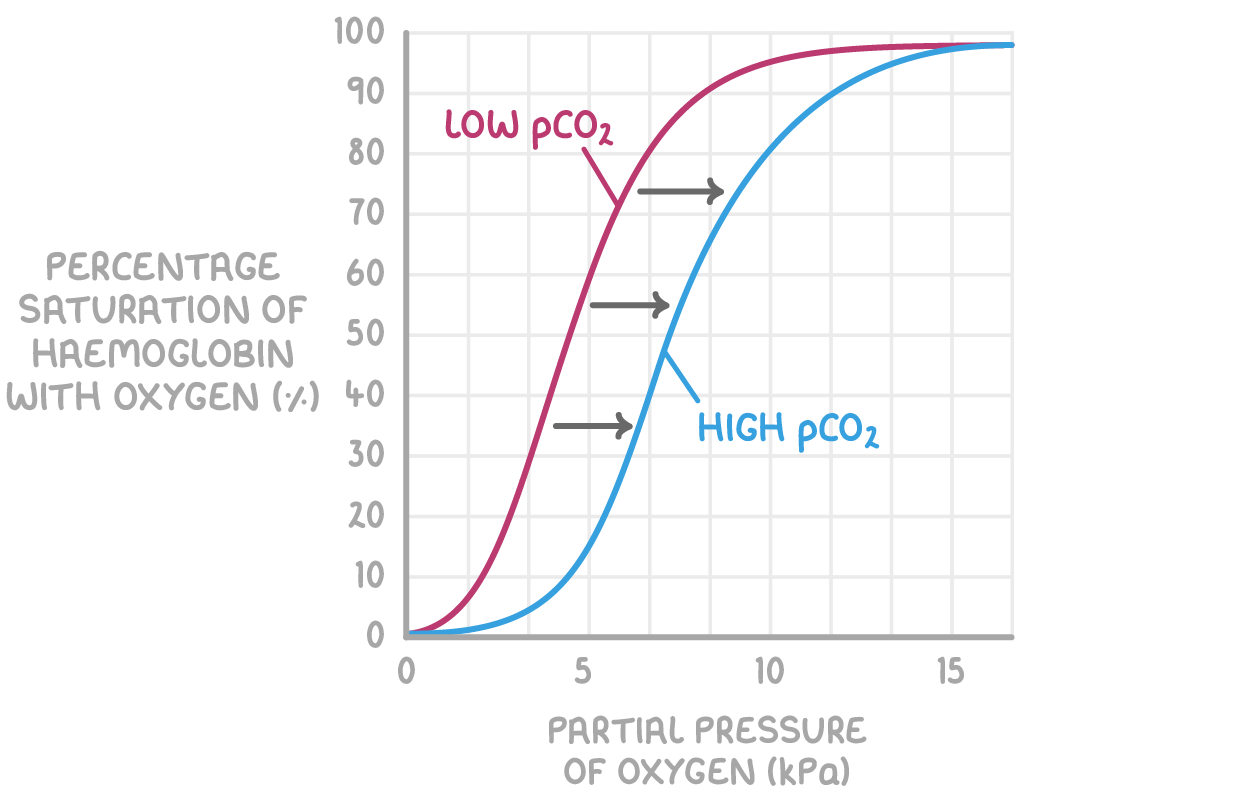Haemoglobin
This lesson covers:
- How haemoglobin transports oxygen
- The factors affecting haemoglobin saturation
- The differences between fetal and adult haemoglobin
- The Bohr effect
How haemoglobin transports oxygen
Oxygen enters the lungs from atmospheric air and then needs to be transported to body cells.
Oxygen is transported to body cells via the blood:
- Red blood cells contain haemoglobin, which has haem groups.
- In the capillaries in the lungs, oxygen binds to iron in haem groups forming oxyhaemoglobin.
- Each haemoglobin molecule can carry four oxygen molecules.
- Oxyhaemoglobin can be transported via blood to respiring body tissues.
- At body cells, oxygen dissociates from haemoglobin.
Factors affecting haemoglobin saturation
Haemoglobin saturation with oxygen depends on the oxygen concentration, or partial pressure of oxygen (pO2). This can be shown on an oxygen dissociation curve.

pO2 affects haemoglobin saturation as follows:
- Higher pO2 - Haemoglobin has a high affinity for oxygen and binds with it (e.g. in the lungs).
- Lower pO2 - Haemoglobin has a low affinity for oxygen and releases it (e.g. at respiring body cells).
The cooperative nature of oxygen binding
Haemoglobin saturation with oxygen also changes depending on how much oxygen has bound to it.
The cooperative nature of oxygen binding means that:
- When haemoglobin binds with one oxygen, it changes shape so it becomes easier to bind another oxygen.
- When haemoglobin is mostly saturated with oxygen, it is harder for more oxygen to bind.
Differences between fetal and adult haemoglobin
Fetal haemoglobin, which is the haemoglobin found in the red blood cells of an unborn fetus, differs from the haemoglobin found in a human adult.
Fetal haemoglobin differs from adult haemoglobin because:
- The fetus needs to obtain oxygen from the mother's blood.
- The fetal haemoglobin therefore has a higher oxygen affinity than the adult haemoglobin found in the mother's blood.
- This allows the oxygen to dissociate from the mother's haemoglobin, and bind with haemoglobin in the fetal blood.
- This ensures that the fetus gets enough oxygen to survive while it develops.
The Bohr effect
Haemoglobin also has a lower affinity for oxygen at higher partial pressures of carbon dioxide (pCO2).

pCO2 affects haemoglobin saturation as follows:
- Higher pCO2 at respiring tissues causes haemoglobin to release oxygen.
- This is because of the Bohr effect, which is the decreased affinity for oxygen in haemoglobin when carbon dioxide is present.
- This means the oxygen saturation of haemoglobin is lower for a given pO2 when pCO2 is higher.
This is needed because the active tissues that produce carbon dioxide require a lot of oxygen from blood. The Bohr effect shifts the oxygen dissociation curve to the right, as seen by the blue line in the graph above.